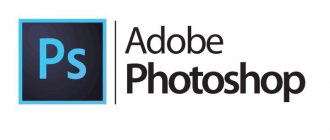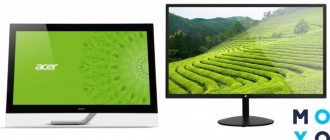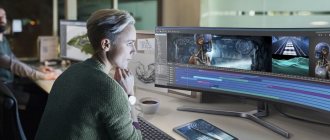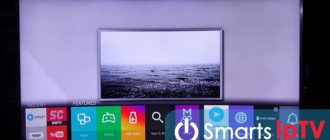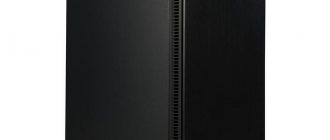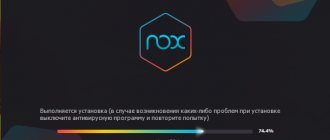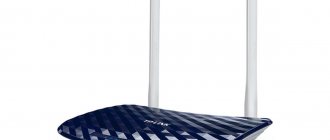- All video cards in this review were tested on a bench with the following configuration:
| Test bench | |
| CPU | Intel Core i7 870 @ 4.0 GHz (182×22) |
| CPU cooling system | Glacialtech F101 + 2 x 120 mm |
| Motherboard | ASUS Maximus III Extreme |
| RAM | Super Talent DDR3 @ 1890, 9-9-9-24-1T |
| HDD | Samsung SpinPoint 750 GB |
| power unit | IKONIK Vulcan 1200 W |
| Frame | Cooler Master test bench 1.0 |
| operating system | Microsoft Windows 7 x64 Ultimate |
| Driver versions: | ForceWare 197.17 drivers were used for NVIDIA video cards; For AMD video cards, Catalyst 10.3 drivers with Catalyst CrossFireX Profiles 10.3 were used |
Test applications:
| Application | Permission | Graphics modes | Tessellation Settings Options |
| STALKER: Call of Pripyat. Sun Shafts Scene | 1680×1050 1920×1200 | DX 11, Max. Detail, No AA/AF, Real Shadows DX 11, Max. Detail, 4xAA/16xAF, Real Shadows | Tessellation Off Tessellation On |
| Colin MCRae DiRT 2 | 1680×1050 1920×1200 | DX 9 Ultra Detail, No AA/AF DX 9 Ultra Detail, 4xAA/16xAF DX 11 Ultra Detail, No AA/AF, Tessellation On DX 11 Ultra Detail, 4xAA/16xAF, Tessellation On | |
| Unigine Heaven v 2.0 | 1680×1050 1920×1200 | DX11, High Detail, No AA/4xAF | Tessellation Off Tessellation Moderate Tessellation Normal Tessellation Extreme |
⇡#Unigine Heaven 2.0
Let's start, perhaps, with a new version of the synthetic test package Unigine Heaven 2.0.
The main focus of Heaven 2.0 was to demonstrate different tessellation modes. The user can choose one of several modes of operation of this technology: off (Off), moderate (Moderate), normal (Normal) and extreme (Extreme). To clearly illustrate the differences between the above modes, we took a few screenshots: Tessellation disabled
Moderate tessellation
Normal tessellation
Extreme Tessellation
The difference between the modes is visible to the naked eye. Enabling tessellation in Unigine Heaven 2.0 gives the image more realism. Some objects acquired a “vital” volume, thanks to which the virtual world began to be perceived much better. Well, let's see what results the most powerful AMD and NVIDIA models will show in this test. In all tessellation modes without exception at a resolution of 1680x1050, the NVIDIA GeForce GTX 480 turns out to be noticeably faster than its main competitor - the AMD Radeon HD 5870. Moreover, when tessellation is enabled, in terms of the minimum fps indicator the GeForce GTX 480 turns out to be many times faster than the Radeon HD 5870! The biggest difference between these cards is in the extreme tessellation mode. The AMD Radeon HD 5970 video card turns out to be faster than NVIDIA's top model, but only until tessellation is activated. In moderate mode, the two-chip monster from AMD is still the leader in average frame rate, but loses about 10 fps in the minimum value. Switching to the Normal mode allows the GeForce GTX 480 to be almost equal to the Radeon HD 5970 in terms of the average frame rate, and at the minimum it is ahead of its dual-chip rival by the same 10 fps as in the moderate mode. Activating the extreme tessellation mode crushes the Radeon HD 5970, but the GeForce GTX 480, as if nothing had happened, continues to show a decent frame rate. Very interesting, let's see what happens when we move to a heavier resolution. Higher resolution did not change the general situation. In Unigine Heaven 2.0, after tessellation is activated, especially in extreme modes, even the Radeon HD 5970 goes to the bottom. At the same time, NVIDIA’s brainchild makes a favorable impression. Complex scenes are much easier for this accelerator than its competitors from AMD. To be fair, it is worth noting that the Unigine Heaven 2.0 test package is synthetic, which does not allow the performance results obtained in it to be transferred to real games. Moreover, it is still difficult to say whether games released in the near future will support such complex tessellation modes. From synthetics to real games, Colin McRae DiRT 2 is next.
Setting up AMD Radeon for CS:GO
Not many people know, but before you start playing CS:GO “densely”, you must first configure your computer correctly. In particular, it’s best to start with a video card. This is where a professional approach to the game begins.
You probably know that there are 2 types of video cards: from nVidia or from AMD. Previously, we already wrote about how to properly configure nVidia video cards, and you can familiarize yourself with the settings in our article about nVidia. Today, we will tell you how to properly configure an AMD video card in order to squeeze maximum fps out of it, combined with good quality.
⇡#ColinMcRae DiRT 2
The developers of DiRT 2 did not include support for DirectX 10 in their product; their brainchild works with either the 9th or 11th version of DirectX.
To be honest, when playing DiRT 2 it is quite difficult to feel the difference between DX9 and DX11 rendering. You can’t do without a close study of screenshots and demo videos. DirectX 9 (no tessellation)
DirectX 11 (tessellation enabled)
DirectX 9 (no tessellation)
DirectX 11 (tessellation enabled)
DirectX 9 (no tessellation)
DirectX 11 (tessellation enabled)
Well, let's see how the performance of our test participants changes when moving from DirectX 9 to DirectX 11.
Without exception, all the heroes of our test at a resolution of 1680x1050 show excellent performance in all modes. Without full-screen anti-aliasing and anisotropic filtering, the leader in DirectX 9 is the GeForce GTX 480 video card, which outperforms even the Radeon HD 5970 in both minimum and average frame rates. The transition to DirectX 11 and the inclusion of tessellation changes the balance of power and now the indicator The minimum frame rate is higher for the Radeon HD 5970, and the average is on par with the GeForce GTX 480. The AMD Radeon HD 5870 video card is slower than the GeForce GTX 480 in both DirectX 9 and DirectX 11. Enabling full-screen anti-aliasing and anisotropic filtering does not affect the balance of power between the new NVIDIA and the Radeon HD 5870, but the Radeon HD 5970 outperforms the GeForce GTX 480 in both DirectX 9 and DirectX 11 in both minimum and average fps. Overall, increasing the resolution had a noticeable impact on the performance of all test participants, especially in anti-aliasing modes. The balance of power between the Radeon HD 5870 and GeForce GTX 480 has not changed; NVIDIA's brainchild is still faster in all modes. But the battle between the GeForce GTX 480 and the Radeon HD 5970, both with and without anti-aliasing, almost always ended in victory for the latter.
How to speed up an AMD (Radeon) video card - increase FPS in games
Good day!
Not long ago I posted a couple of articles on my blog for accelerating video cards from nVidia and IntelHD, now it’s AMD’s turn. In general, I should note (from my experience) that AMD video cards are among the best in terms of acceleration and increasing the number of FPS by fine-tuning the power supply and 3-D graphics parameters. Perhaps that's why I'm still not indifferent to AMD.
According to my observations, even without any overclocking, an AMD video card can be finely tuned and thanks to this, increase the number of FPS by at least 10-20% (and even if you resort to overclocking and “tricky” settings of the game itself.)!
Note!
If you have an IntelHD or nVidia video card, I recommend the following articles:
⇡#STALKER: Call of Pripyat.
In the Sun Shafts scene from the game STALKER: Call of Pripyat, even the most powerful accelerators do not demonstrate a high frame rate.
Let's see what performance our heroes will show us in DirectX 11 with and without tessellation enabled. But first, a few screenshots. No tessellation
Tessellation enabled
Without tessellation and anti-aliasing, the AMD Radeon HD 5870 video card is on par with the GeForce GTX 480, with a slight advantage over the NVIDIA representative in terms of average frame rate. However, it’s worth enabling tessellation and the GeForce GTX 480 outperforms its main competitor in both minimum and average fps. But after enabling full-screen antialiasing, the GeForce GTX 480 loses ground and is almost on par with the Radeon HD 5870. Please note that the difference in performance between modes with and without tessellation enabled is small. This is quite natural, since the differences in picture quality after tessellation are activated are minimal. The absolute champion at 1680x1050 resolution is the Radeon HD 5970, which shows the best results both with and without tessellation.
The increase in resolution did not change the picture much. The Radeon HD 5970 accelerator is still the leader in all modes, the GeForce GTX 480 is slightly ahead of the Radeon HD 5870, with the exception, perhaps, of the most difficult mode without tessellation, but with full-screen anti-aliasing and anisotropic filtering enabled.
Setting up AMD Radeon for CS:GO
Not many people know, but before you start playing CS:GO “densely”, you must first configure your computer correctly. In particular, it’s best to start with a video card. This is where a professional approach to the game begins.
You probably know that there are 2 types of video cards: from nVidia or from AMD. Previously, we already wrote about how to properly configure nVidia video cards, and you can familiarize yourself with the settings in our article about nVidia. Today, we will tell you how to properly configure an AMD video card in order to squeeze maximum fps out of it, combined with good quality.
⇡#Conclusions
Enabling tessellation in modern computer games and test utilities, if they, of course, support this technology, certainly has the best effect on picture quality.
The surrounding three-dimensional world no longer seems so lifeless and unrealistically correct. Those elements that were previously ordinary textured rectangles now look more natural, and the play of light on their surfaces is literally mesmerizing. It is worth noting the brilliant execution of the three-dimensional world in Unigine Heaven Benchmark 2.0. However, as for real games, the situation here is not so clear-cut. Without a close look at screenshots and videos, it’s not so easy to immediately answer the question of what changed after turning on tessellation. So, truly vivid impressions from the use of tessellation in game projects are more a matter of promising games. Will they use this technology as deeply as Unigine Heaven 2.0? I would like to believe that yes. As for the balance of power between the participants in our test, in modes with tessellation enabled, the GeForce GTX 480 is ahead of the Radeon HD 5870, both in “synthetic” and in real games. The confrontation between the GeForce GTX 480 and Radeon HD 5970 in modern games ends in the victory of the latter, but in “synthetics” GeForce is ahead, which suggests that in promising games the results of the GeForce GTX 480 and Radeon HD 5970 will be closer. Discuss the material at the conference
Advanced settings
The most advanced mode is considered to be gameplay using adjusted graphics adapter frequencies. To do this, just use the slider placed in the performance category.
The user has the right to choose the performance level:
- high;
- standard.
Can be set to high quality position. In order to choose the right options for making changes, users must necessarily rely on the personal technical characteristics of the software and personal requests. Among the fundamental factors it is customary to highlight:
- system requirements of the application for which changes are planned;
- what picture quality is planned to be obtained as a result of graphics adapter edits;
- technical characteristics of the desktop computer or laptop used.
Only after receiving comprehensive information should you start making changes.
What is amd texture filtering quality?
Material type Installation and configuration
Article ID 000028812
Last edition 01/29/2020
AMD Radeon settings allow users to change the image quality and level of detail in games. Because high image quality can impact performance, achieving an optimal gaming experience requires a balance between image quality and performance. For most users, the default driver settings provide the best combination of image quality and performance, measured in frames per second.
Accessing Radeon Game Settings
To get to these options, open AMD Radeon Settings by right-clicking on your desktop and selecting AMD Radeon Settings .
Click on the Games .
Click on Global Settings .
| Note | Any changes to global settings will be applied to all 3D applications on startup. |
If you want to create separate settings for specific 3D applications, you can create custom application profiles. For steps to create them, see the "Creating Application Profiles" section of this document.
Smoothing method
Anti-aliasing improves image quality by reducing jagged edges in textures. Anti-aliasing makes the image appear smoother by reducing the frame rate per second.
In the example below, anti-aliasing has been applied to the image on the left. The image on the right has no anti-aliasing, so it has more jagged edges.
Radeon Options offers three types of anti-aliasing with varying characteristics and performance impacts.
When choosing an anti-aliasing mode, three options are available:
- Multisampling Anti-Aliasing (MSAA): Improves image quality by reducing aliasing at the edges of textures, but cannot remove aliasing on transparent textures such as fences.
- Adaptive Anti-Aliasing (AAA): Improves image quality by reducing aliasing at texture edges and on transparent textures.
- Sparse Grid Supersampling Anti-Aliasing (SSAA): Improves image quality by using more sampling than MSAA and AAA and reducing aliasing on all textures. SSAA has the greatest impact on frame rate out of all the options in Radeon Settings.
Anti-aliasing mode
Anti-aliasing mode determines whether anti-aliasing is controlled by the 3D application or Radeon settings.
When choosing an anti-aliasing mode, three options are available:
- Use Application Settings - Gives the 3D application full control over the level of anti-aliasing. Image quality is controlled through the graphics settings of the 3D application.
- Enhance Application Settings - Provides the flexibility to improve the existing anti-aliasing used in a 3D application by having the driver apply another anti-aliasing.
- Overwrite Application Settings - Allows Radeon Settings to fully control the level of anti-aliasing in a 3D application.
Selecting Overwrite application settings applies different levels of anti-aliasing to the 3D application.
The anti-aliasing level can be set to x2 , x4 or x8 , and a higher number means higher image quality at the expense of lower frame rates.
Morphological filtering
Morphological filtering is a shader-based anti-aliasing post-processing technique that can be used in conjunction with the three anti-aliasing modes listed above.
Morphological Filtering may have less of an impact on frame rate than other anti-aliasing modes in Radeon™ Options. However, in some cases it can lead to blurred images.
In the example below, morphological filtering is applied to the image on the left. The image on the right has no morphological filtering, so it has more jagged edges.
Morphological filtering can be applied using the Overwrite advanced app settings and requires the app to be launched in the preferred full screen mode .
Morphological filtering can be turned on and off .
Anisotropic filtering
Anisotropic filtering can improve the quality and sharpness of textures on distant or angled surfaces, such as roads or trees.
Anisotropic filtering has little impact on performance (frame rate) and can improve image quality in most 3D applications.
In the example below, anisotropic filtering has been applied to the image on the left, increasing the amount of wood texture. In the image on the right, there is no anisotropic filtering.
Anisotropic filtering can be applied using the Overwrite application settings .
The anisotropic filtering level can be set to x2 , x4 , x8 or 16x , and image quality will be improved by reducing the frame rate.
Texture filtering quality
Texture filtering quality changes the quality of textures when running 3D applications.
Texture filtering quality has a negligible impact on performance and image quality, so the default standard setting is the preferred option for optimizing gameplay.
Surface format optimization
Surface Format Optimization allows the graphics driver to change surface rendering formats whenever possible, resulting in improved performance and reduced video memory usage.
It is recommended to leave this option enabled to optimize your gaming experience.
Shader cache
Shader Cache enables games to load faster and reduce CPU usage by collecting and storing frequently used game shaders instead of generating them each time.
The shader cache is set to AMD optimized by default and can be disabled globally.
Tessellation mode
Tessellation mode increases the detail of objects by adjusting the number of polygons to be drawn.
Limiting the tessellation level allows for higher frame rates in games that use high levels of tessellation.
In the example below, x64 tessellation has been applied to the image on the left, increasing the level of detail on the bricks. The image on the right has no tessellation and reduced detail.
Tessellation mode can be applied using the Overwrite application settings .
The maximum tessellation level can be set to x2 , x4 , x6 , x8 , x16 , x32 or x64 , and image quality will be improved by reducing the frame rate.
Waiting for Vsync
Vertical Sync, or VSync, allows you to synchronize your application with your monitor's frame rate to reduce image tearing.
Suitable video cards
Anisotropic filtering mode has been possible on custom video adapters since 1999, starting with the famous Riva TNT and Voodoo cards. The top configurations of these cards were quite capable of rendering trilinear graphics and even produced decent FPS figures using x2 anisotropic filtering. The last number indicates the quality of filtering, which, in turn, depends on the number of texels involved in calculating the final color of a pixel on the screen; in this case, as many as 8 are used. Plus, the calculations use the capture area of these texels corresponding to the viewing angle, and not a circle, as in linear algorithms earlier. Modern video cards are capable of processing filtering with an anisotropic algorithm at the x16 level, which means using 128 texels to calculate the final pixel color. This promises a significant improvement in the display of textures distant from the viewpoint, as well as a serious load, but the latest generation of graphics adapters are equipped with enough RAM and multi-core processors to cope with this task.
What it is?
Every computer player wants a colorful picture of the virtual world to unfold on the screen, so that, having climbed to the top of a mountain, one can survey the picturesque surroundings, so that, pressing the acceleration button on the keyboard to the fullest, one can see not only the straight line of a racing track to the horizon, and also a full-fledged environment in the form of city landscapes. Objects displayed on a monitor screen ideally stand directly in front of the user at the most convenient scale; in fact, the vast majority of three-dimensional objects are at an angle to the line of sight. Moreover, different virtual distances of textures to the point of view also make adjustments to the size of the object and its textures. Calculations for displaying a three-dimensional world on a two-dimensional screen are used in various 3D technologies designed to improve visual perception, not least of which is texture filtering (anisotropic or trilinear). Filtration of this type is one of the best developments in this area.
